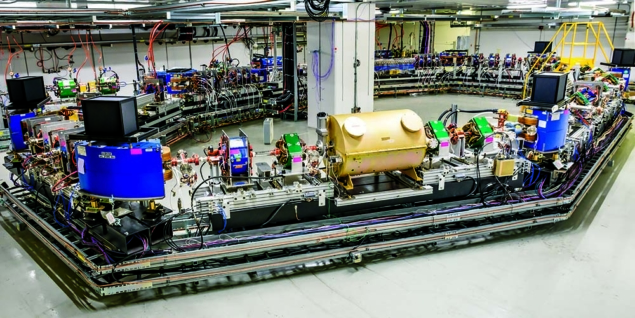
In late August, a beam of electrons successfully circulated for the first time through a new particle accelerator at Fermilab in the US. The Integrable Optics Test Accelerator (IOTA), a 40 m-circumference storage ring, is one of only a handful of facilities worldwide dedicated to beam-physics studies. It forms the centrepiece of the Fermilab Accelerator Science and Technology (FAST) facility, and is the first research accelerator that will be able to switch between beams of electrons and protons.
Researchers will use IOTA to explore multiple accelerator technologies, including several that have been proposed but never tested, in particular targeting ultrahigh-intensity beams. More fundamentally it will allow precise control of a single electron – also opening the door to unique experiments in fundamental physics, such as understanding how the electron’s quantum-mechanical nature blurs its position in space.
For accelerator physicists, IOTA’s key focus is to test the concept of a nonlinear integrable focusing lattice in a realistic storage ring. Whereas contemporary accelerators are designed with linear focusing lattices, in reality machines always have nonlinearities, e.g. resulting from magnet imperfections, which lead to resonant behaviour and particle losses. A nonlinear integrable focusing lattice, proposed in 2010, is predicted to significantly suppress collective instabilities via Landau damping and thus could improve the performance of accelerators such as a Future Circular Collider. IOTA scientists will also capitalise on Fermilab’s existing strengths in accelerator technologies, such as cooling, to make more orderly beams that are easier to manipulate and accelerate.
Over the next year, the Fermilab team will install the proton injector. Once it is in place, it will complete the trio of particle accelerators that make up Fermilab’s FAST facility: the proton injector, the electron injector (completed in 2017) and the IOTA ring. FAST has already attracted 29 institutional partners, including European institutions, US universities, national laboratories and members from industry.
“IOTA is one of a kind – a particle storage ring designed and built specifically to host novel experiments with both electrons and protons, and to develop innovative concepts in accelerator science,” says Fermilab physicist Alexander Valishev, head of the team that developed and constructed IOTA. “This facility offers a flexibility that can be useful to a wider community – above and beyond the needs of high-energy physics.”





